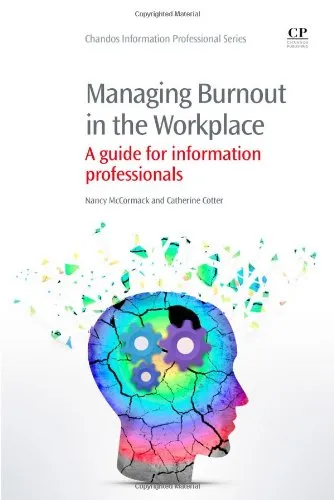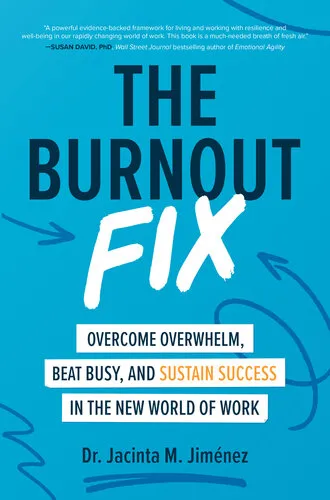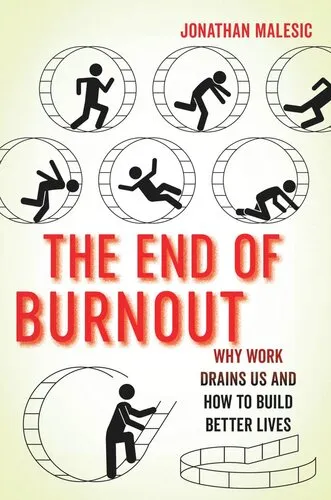Managing Burnout in the Workplace. A Guide for Information Professionals
3.0
Reviews from our users

You Can Ask your questions from this book's AI after Login
Each download or ask from book AI costs 2 points. To earn more free points, please visit the Points Guide Page and complete some valuable actions.Related Refrences:
Persian Summary
Introduction
Burnout in the workplace is a multifaceted challenge affecting professionals across various industries, and information professionals are no exception. In our book, Managing Burnout in the Workplace: A Guide for Information Professionals, we delve into the intricate dynamics of burnout, offering valuable insights and practical strategies specifically tailored for those working in the information sector. This comprehensive guide aims to equip readers with the knowledge and tools needed to recognize, manage, and prevent burnout, ensuring healthier, more productive work environments.
Detailed Summary of the Book
The book presents a thorough examination of burnout, beginning with an exploration of its definition and the unique factors contributing to burnout among information professionals. We cover the psychological, emotional, and physical dimensions of burnout, drawing on both contemporary research and real-world examples. Readers will find detailed explanations of the symptoms and stages of burnout, helping them to identify early warning signs both in themselves and their colleagues.
Each chapter guides readers through various aspects of burnout management, from personal coping mechanisms to organizational strategies. We discuss mindfulness practices, time management techniques, and stress-reduction methods that individuals can adopt in their daily routines. Additionally, we emphasize the importance of organizational culture, leadership, and policy in preventing burnout, offering evidence-based recommendations for creating supportive workplace environments. A toolkit of resources and exercises at the end of the book provides readers with actionable steps to apply the concepts learned.
Key Takeaways
- Recognition: The crucial first step in managing burnout is awareness. Understanding the signs and symptoms allows for timely intervention and support.
- Personal Strategies: Techniques such as setting boundaries, practicing mindfulness, and seeking social support can mitigate the impact of burnout.
- Organizational Change: Addressing workload, fostering a positive work culture, and encouraging open communication are vital to preventing burnout at an institutional level.
- Sustainable Practices: Implementing long-term strategies that promote work-life balance and employee well-being is essential for sustained success.
Famous Quotes from the Book
"Burnout is not a personal failure; it's a signal that the environment in which one works is in need of change."
"In the quest for productivity, the well-being of the individual should not be sacrificed. Sustainable success is built on healthy foundations."
Why This Book Matters
The prevalence of burnout in modern workplaces underscores the need for targeted strategies and informed approaches. Information professionals, due to the nature of their work, face unique stressors that can lead to burnout if not properly managed. This book matters because it provides a specialized focus on the challenges encountered by these professionals, offering solutions that are both practical and effective.
By addressing both individual and organizational perspectives, Managing Burnout in the Workplace: A Guide for Information Professionals serves as a vital resource for fostering resilience and enhancing job satisfaction. It empowers readers to take proactive steps toward improving their well-being and contributing positively to their workplaces. Ultimately, this book aspires to inspire change that benefits individuals, organizations, and the broader information professions.
Free Direct Download
You Can Download this book after Login
Accessing books through legal platforms and public libraries not only supports the rights of authors and publishers but also contributes to the sustainability of reading culture. Before downloading, please take a moment to consider these options.
Find this book on other platforms:
WorldCat helps you find books in libraries worldwide.
See ratings, reviews, and discussions on Goodreads.
Find and buy rare or used books on AbeBooks.
1644
بازدید3.0
امتیاز0
نظر98%
رضایتReviews:
3.0
Based on 0 users review
Questions & Answers
Ask questions about this book or help others by answering
No questions yet. Be the first to ask!








